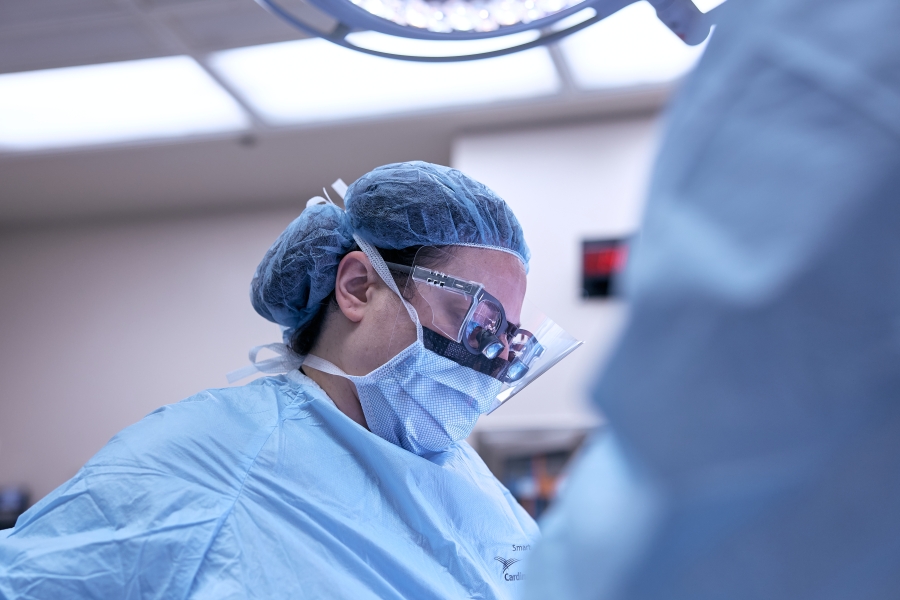My patients often express concern about exercising after a heart attack. That’s understandable. But activity can be one of the best things for your heart and your healing. Here’s what I want patients to know.
Why you should exercise after a heart attack
Exercise will help you regain your energy and help you return to your normal daily activities.
Physical activity will make your heart muscle stronger. It can help you be more active without chest pain, achieve a better sense of general well-being, and help prevent any secondary heart events from taking place. Regular exercise helps control blood pressure, cholesterol, and blood sugar which may decrease your need for medication.
What kind of exercise you should do depends on a few factors. These include your current health and any damage done to your heart muscle during the heart attack. Overall, you want to improve your aerobic fitness, which in turn can improve your strength. Your cardiac care team will help you set personalized goals. And a cardiac rehabilitation program can help you meet them safely. Through completion of cardiac rehabilitation, you will have the tools to continue exercise on your own and maintain any improvements made.
How to return to exercise after a heart attack
I advise my patients to start slowly and to remember that everyone recovers at their own pace. Here are some simple moves to get you started:
Aerobic Exercise
Walking: This is one of the easiest and most effective ways to get moving after a heart attack. Start by walking around your house. Soon, you can walk around your yard. Then around the neighborhood. Every step counts. Other forms of aerobic exercise include light cycling and swimming.
Resistance Training
In addition to aerobic exercise, resistance training with light hand weights is another great mode of exercise to aid in recovery and regain strength.
- Start with light, tolerable weights
- Focus on slow, controlled movements
- An appropriate repetition range is from 6-10, and an appropriate set range is from 2-3 sets
- Examples: Bicep curls, lateral arm raises
Flexibility
Stretching is very important to maintain mobility or improve the range of motion in your joints. You can work on flexibility by stretching daily, ideally before exercise as part of a warm-up and after exercise as part of the cool-down. It can also help muscles to recover after a bout of exercise. Here are some tips on stretching:
- Stretch slowly to the point of slight discomfort – you’ll feel tension in the muscles being stretched (like a pulling sensation)
- Stretch muscle groups 1-3 times, holding each stretch for 10-30 seconds
- Examples: seated torso stretch, seated hamstrings stretch, calf stretch
Tips for physical activity after a heart attack
Your exercise routine will probably look different than it did before your heart attack. Here are a few things to keep in mind:
- Start slow. The first week, walking around the house for five minutes is a great goal.
- Gradually increase how long you exercise at a time. Ideally, you’ll work up to 30 to 45 minutes of activity at once or at least 150 minutes per week. Start with light intensity and then increase as these exercises become easier/more tolerable.
- Warm up and cool down each time you exercise. Stretching and walking slowly can help your muscles and heart transition to and from physical activity.
- Choose activities that you enjoy. Whether it’s water aerobics, stationary cycling, or rowing, activities you like will help you build healthy habits.
- Avoid excessively warm or cold activities. It’s a good idea to pass on hot yoga or exercising outside in frigid temperatures.
- Have realistic expectations. Your energy level and physical capabilities may have changed. Remember that you’re still healing.
- Stop if you see warning signs. Excessive shortness of breath, chest discomfort, lightheadedness, or palpitations that don’t go away mean you need to check in with your care team. Listen to your body – if something doesn’t feel right, that is a sign to discontinue activity.
- Keep track of your activity. A log can help you monitor your progress and celebrate your success.
Get more help from our cardiac rehab program
Recovery is a team effort. At the Temple Health Cardiac Rehabilitation program, our experts specialize in this type of healing.
Our outpatient program is focused on rebuilding strength and improving your quality of life. Exercise training, education on heart-healthy habits, and emotional support are all part of cardiac rehab.
Cardiac rehab can make healing from a heart attack easier. Plus, it’s typically covered by insurance. Our caring heart health team can help you learn more. To request an appointment, please call 215-728-3944.
